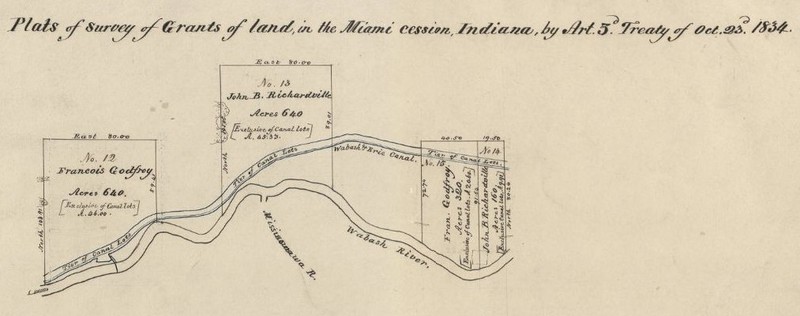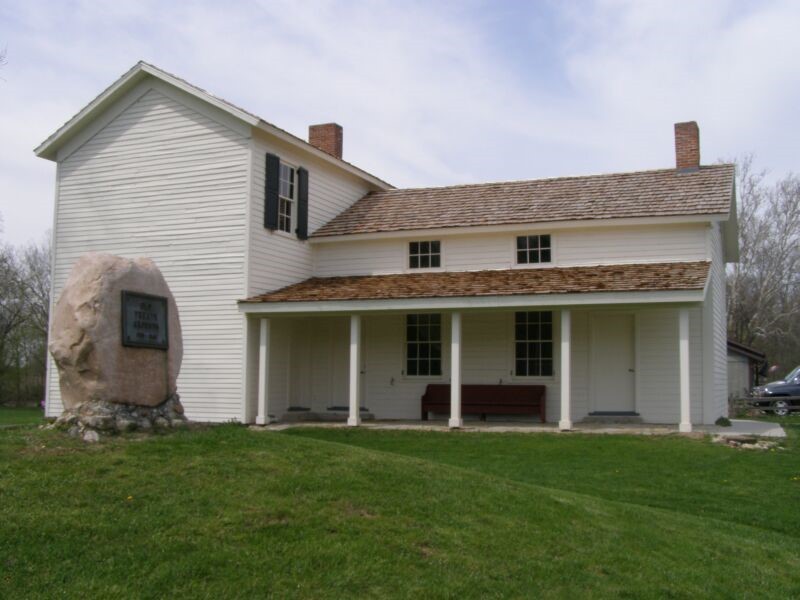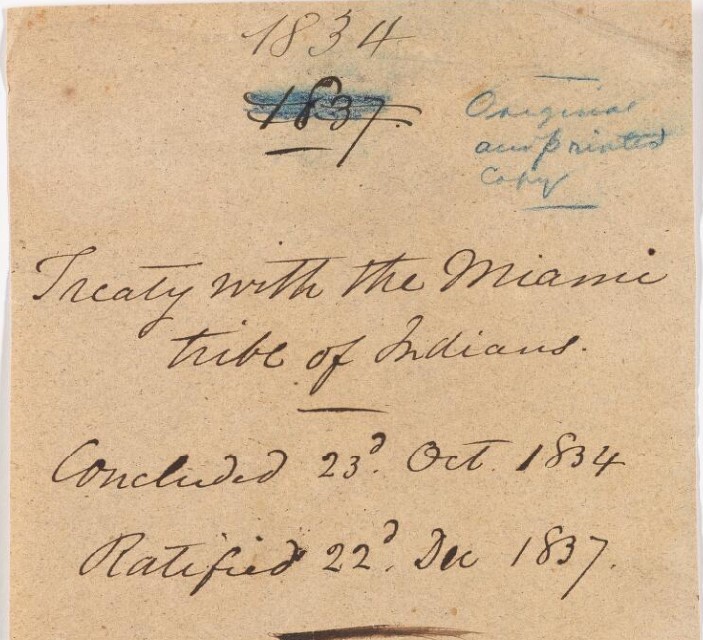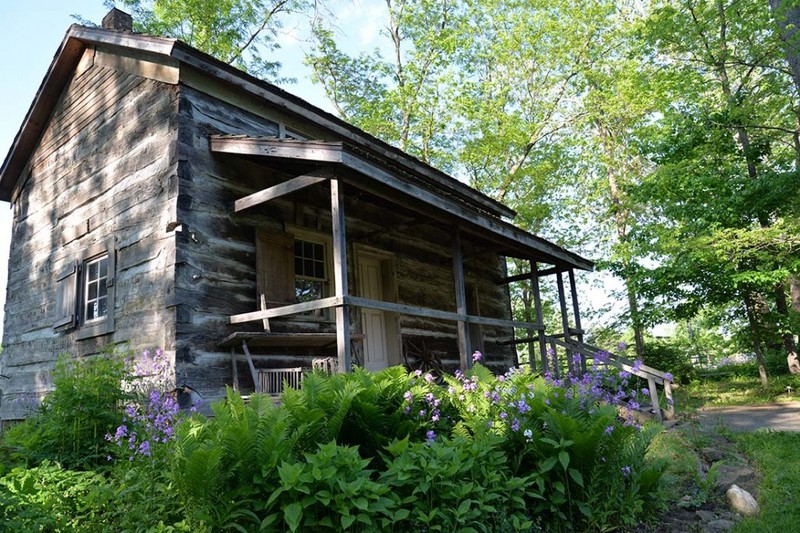Forks of Wabash
Introduction
Text-to-speech Audio
The junction of the Wabash and Little rivers, 100 yards south, was the western terminus of the Maumee-Wabash long portage and, in 1835, of the first section of the Wabash and Erie Canal. During the 18th century French and English traders passed this way and, in 1778, Henry Hamilton brought 171 British troops and 350 Indians with 40 boats through the portage enroute to retake Fort Sackville at Vincennes. Three Miami villages were located here and Chiefs Richardville and LaFontaine once lived here. The Forks was the scene of many Indian councils and the Miami Treaties of 1834, 1838 and 1840.
Images
Map of Miami Lands Kept with Treaty of 1834

Chiefs House (Richardville and LaFontaine)

Cover Page of the Treaty of 1834

Nuck Log Cabin

Backstory and Context
Text-to-speech Audio
Forks of the Wabash is the area in which the Little River (also known as Little Wabash and La Petite Rivière) and the Wabash River meet. This area has been known since the early 1600s by traders as part of the shortest route between the lower Great Lakes (Lakes Erie and Ontario) and the Mississippi River. It was a village and headquarters for the Miami Indians after Chief Richardville’s death in 1941. Beginning in 1818, the Miami ceded portions of their land to the United States government, first to the south of the Wabash and then to the north. A few places were “reserved” for use by various individuals, families, and groups. Even these diminished, so that by 1840 only individual and family lands remained and most Miami were forced to relocate to Kansas and then Oklahoma.
While the marker stands on the east side of State Route 9 in a grassy area off the shoulder of US 24, a trail head is nearby that offers a paved path to walk (handicap accessible) in the area of the Forks. Continuing on US 24 west, on the left side of the road after passing over State Route 9 is the Historical Forks of the Wabash.
Historic Forks of the Wabash is dedicated to honoring prior generations and educating visitors about those generations. The Chief’s House has been restored to 1846. While there is some conflicting information on whether the house was built by Chief Jean Baptiste Richardville or by this son-in-law Chief Francis LaFontaine, there is no doubt of the historical significance of the house. Also located on the property is the Nuck log house, an 1841 pioneer log cabin and a schoolroom furnished to the 1880s.
In the 1990s, Ball State University did excavation work during a restoration of the Chief’s House. The full report of their findings can be viewed at the Keefer Center at the Huntington City Township Public Library.
Sources
- “Forks of Wabash,” IN.gov, accessed June 28, 2021, https://www.in.gov/history/state-historical-markers/find-a-marker/forks-of-wabash/
- “Confluence of History,” Herald-Press [Huntington, IN], 16 June 1994, Special Commemorative Edition.
- Simons, Richard S., “Little River,” The Indianapolis Start Magazine, 14 Sept 1969.
- “About Us, Little River Valley,” Litter River Valley, accessed June 28, 2021. https://www.lrwp.org/littlerivervalley
- Ericsson, Dwight & Ann, “The Forks of the Wabash: An Historical Survey.” This book can be located at the Huntington City-Township Public Library. hctpl.info.
https://indianamemory.contentdm.oclc.org/digital/collection/p16066coll68/id/68
http://forksofthewabash.org/about-us/historic-buildings/
https://digitreaties.org/treaties/treaty/147968039/
http://forksofthewabash.org/about-us/historic-buildings/
